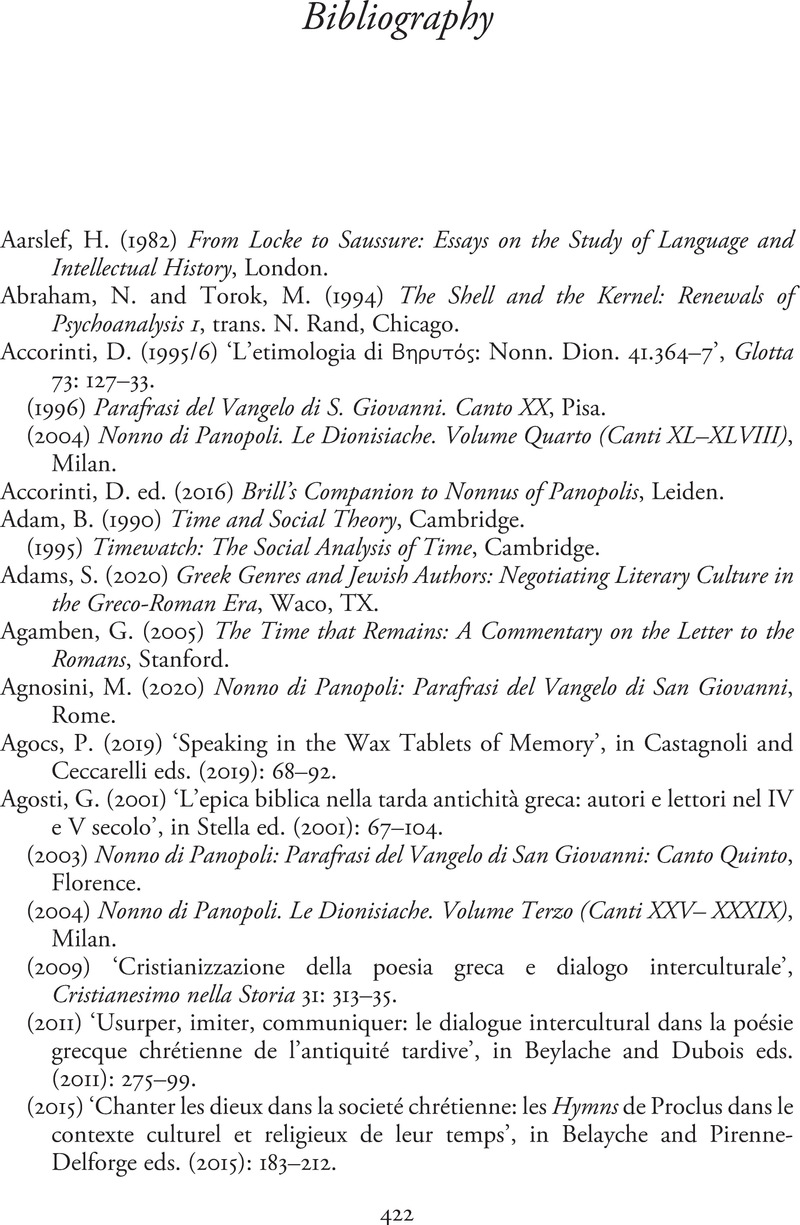Bibliography
Published online by Cambridge University Press: 13 January 2022
Summary

- Type
- Chapter
- Information
- The Christian Invention of TimeTemporality and the Literature of Late Antiquity, pp. 422 - 471Publisher: Cambridge University PressPrint publication year: 2022

